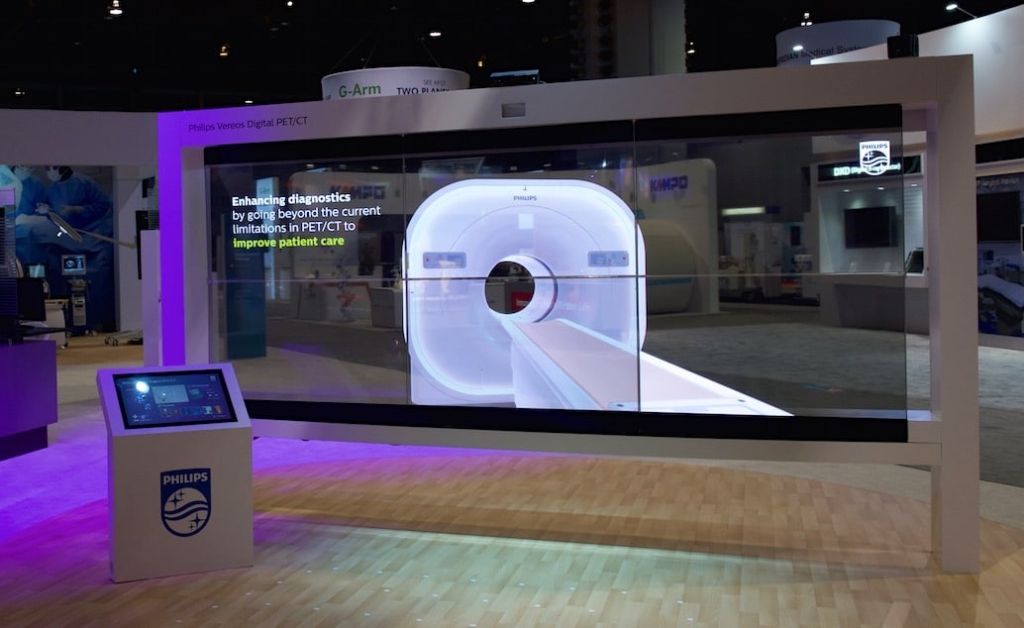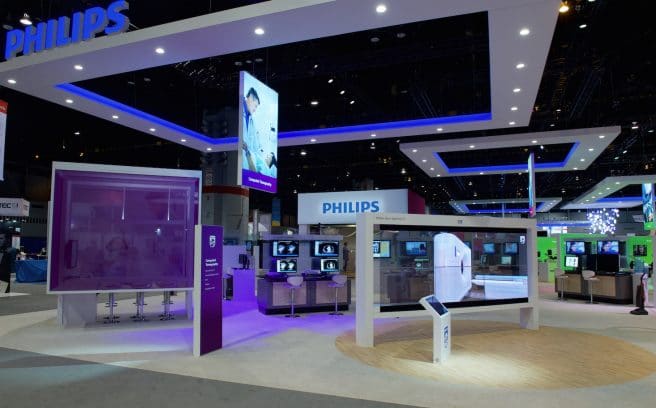Transparent OLED Displays
One of the latest innovations in display screen technology is transparency. Being able to see through the glass offers some unique opportunities for both the design of trade show booths and permanent museum exhibits. OLED (Organic Light Emitting Diode) technology has some unique features.

We used OLED for the first time at RSNA 2016 as a video wall made from six transparent screens, two high by three wide. The booth was designed by Czarnowski for one of our key clients, to help them address two challenges.
The first challenge was to show detailed images of their large medical devices. These machines weigh several thousand pounds each and arrive on a tractor-trailer. They are difficult to ship, costly to assemble and time intensive to set up on the trade show floor. The client is always looking for a way to demo these wonderful machines without actually having them physically present.
The second challenge was to demonstrate the capabilities and benefits in a way that was intriguing to attendees. RSNA has tens of thousands of attendees so Czarnowski was looking for something that would be eye-catching and attract a crowd.
Transparent Screens
These displays had been available for years, but they really didn’t look that good and no one would call them vibrant.
We waited to invest until we saw the next generation in the summer of 2016 and started to demo these to the client and the exhibit designer and they thought it was perfect. The image looked fantastic, it was, honest-to-goodness, 1920 by 1080, full high-definition. So it looked sharp and clear and fantastic, and when there was no image on it, it looked clearer than earlier versions of the technology ever had.
We took the time over the summer to really put the OLED screens through their paces so that we understood how to get the most out of them. By the time we got to the show floor at RSNA, they were tried-and-true, tested and they looked awesome.
Gesture Control
Microsoft Kinect enables users to control and interact with their computer through a natural user interface using gestures.
The host presenting the demo used Kinect to make the presentation. Once Kinect is locked on the presenter, their body movements manipulate the view of the particular machine they’re showcasing. The media is written so that as they walk closer to the screen, it zooms in and they get a closer view. If they step back, it moves backs. It matches their movement. Through gesture control they can literally see all sides of these machines, and control the angle and zoom level by moving around the glass wall.
Successful Outcomes
The result was everything the client hoped for and more. Their audience was engaged in the content and the large machines stayed in the warehouse.
The only criticism we heard was that visitors stopped to ask about the transparent display screens and not the product demos. At least their curiosity proved that we had accomplished the client’s second goal, to draw traffic into the booth.


